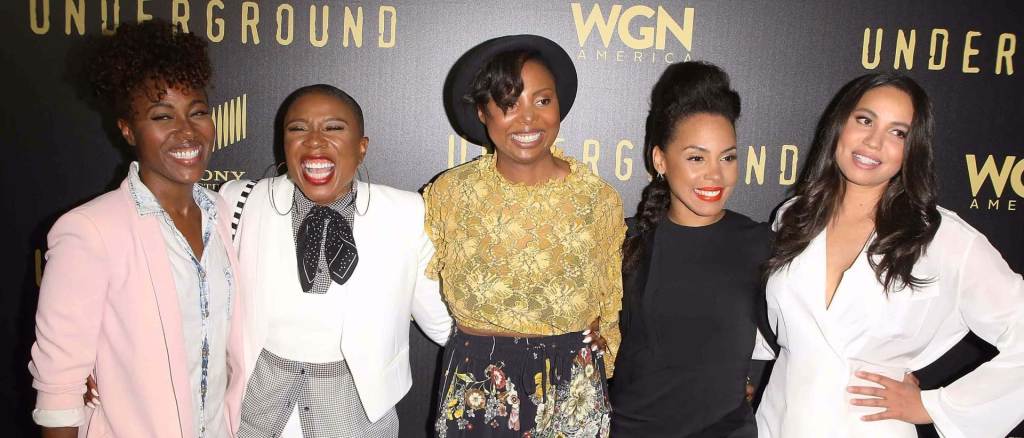
At the Ford Foundation, a big part of our work to disrupt inequality is about connecting people to the issues in ways that move them to create change. But it can be hard to get people’s attention, let alone motivate them to act.
So how about starting with what people are already paying attention to? All of us know from personal experience that pop culture—from movies to music, sports, fashion, art, books, comics, theater, and everything in between—is a powerful thing. If we can leverage the characters and stories that have already captured people’s attention, pop culture can be an opportunity for powerful strategic communications, too.
That’s why we partnered with AndACTION to produce the report Pop Culture Works for Social Change. The report outlines how justice-minded organizations can combine a strategic social justice goal with an engrossing storyline to spotlight injustice, disrupt stereotypes, build empathy, challenge traditional narratives, and shape new narratives. Since TV and movies have a unique ability to burst through the bubble and meet people where they are, these cultural forms also present opportunities for us to bring audiences along to where we want them to be.
One example of what this looks like can be seen in our own JustFilms program, which supports filmmakers who are increasingly moving between the worlds of independent and commercial film, web and TV—as newer platforms like Hulu, YouTube, Amazon, and Netflix are joining traditional cable and public TV as spaces for experimentation in cinematic storytelling. Two JustFilms-supported documentaries that premiered at the Sundance Film Festival in January are focused on the problem of aggressive policing of African American communities, and we expect they’ll make a big splash when they’re released more widely later this year. Whose Streets? explores the lives of African American residents in Ferguson, Missouri, in the wake of Michael Brown’s shooting by a police officer. The Force is an inside look at the police department in Oakland, California. By letting the storytelling do the heavy lifting of providing context and emotional connection, organizations that work on related issues can use these films to combat stigma, create space for understanding, and discuss possible solutions.
But maybe it’s obvious how topical documentaries like those can spur dialogue and awareness. So consider a narrative television show like WGN’s Underground, which tells the story of slaves who escape from a Georgia cotton plantation just before the Civil War. Unlike most stories about the history of slavery, this one is centered on the perspective of the slaves themselves; the show is grounded in resonant historical details but fictionalizes them to create greater depth and opportunity for story. By showing historical characters pursuing freedom in the face of oppression and brutality, the show draws connections to racial injustices in places like Ferguson and Oakland today. The creators know their intended audience well—the soundtrack is filled with music by Beyoncé, Kendrick Lamar, and Kanye West—and their cast is highly engaged on social media, creating opportunities for racial justice organizations to connect with young audiences that are unlikely to be interested in dry research briefs. With the show delivering drama and emotion, organizations can focus on creating connections to the real-world problems, policies, and activism that are relevant to the issues viewers have come to feel personally invested in.
Tech-oriented series like Mr. Robot and Black Mirror show the rewards and risks of new technology—with an emphasis on the risks—exploring complex issues about data, privacy, and life online through compelling (and often unnerving) storylines. Adapted from a best-selling novel, the recently released movie The Circle uses characters played by Emma Watson and Tom Hanks to make the point that if we don’t work to ensure transparency, privacy, access to knowledge, and free expression for all people—and restrict data collection—we’re in for a world of trouble. But while the movie’s strong point of view might spur some discussion as people leave the theater, the real potential is for social justice organizations to leverage cultural moments like these beyond their most obvious content.
Of course, the examples I’ve highlighted here represent a tiny fraction of the wealth of opportunities out there. But the fact is that big studios and production companies have invested heavily in creating shows and movies that people want to watch, crafting stories and characters that viewers love or love to hate. This represents a great opportunity for organizations working to advance social justice—an opportunity I’d argue we can’t afford to pass up.
Explore the full report to learn more about how to reach audiences where they already are, including clear steps for driving social change through pop culture. Stay tuned for an update on the Pop Culture Collaborative, a new Ford-supported resource for those interested in working with pop culture strategies. And join us in thinking strategically about how you can use the compelling stories around you to spark action toward justice.
AndACTION provides technical assistance and training for nonprofits on how to integrate TV and film stories into their strategic communications planning. Get in touch at [email protected].


